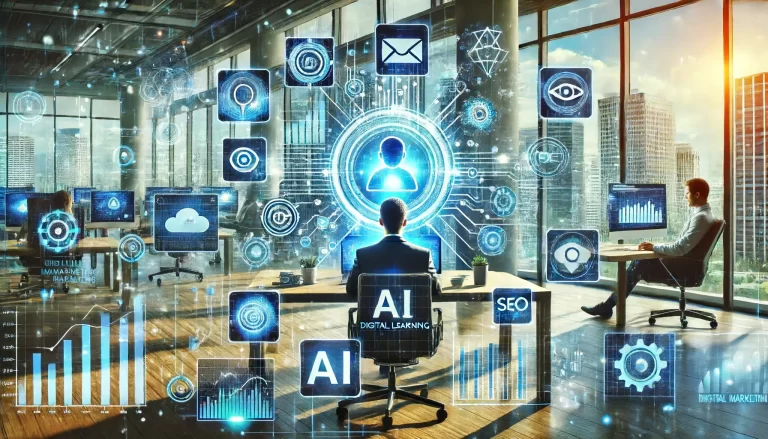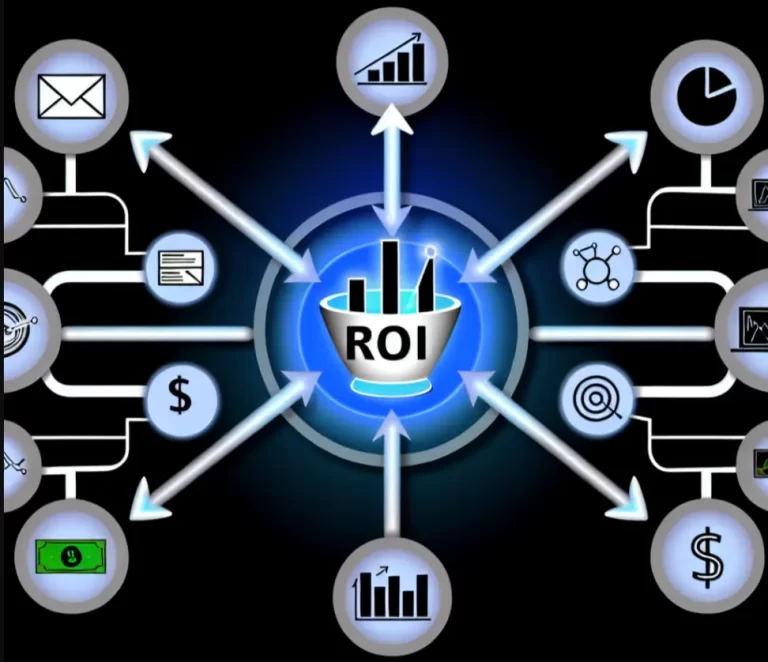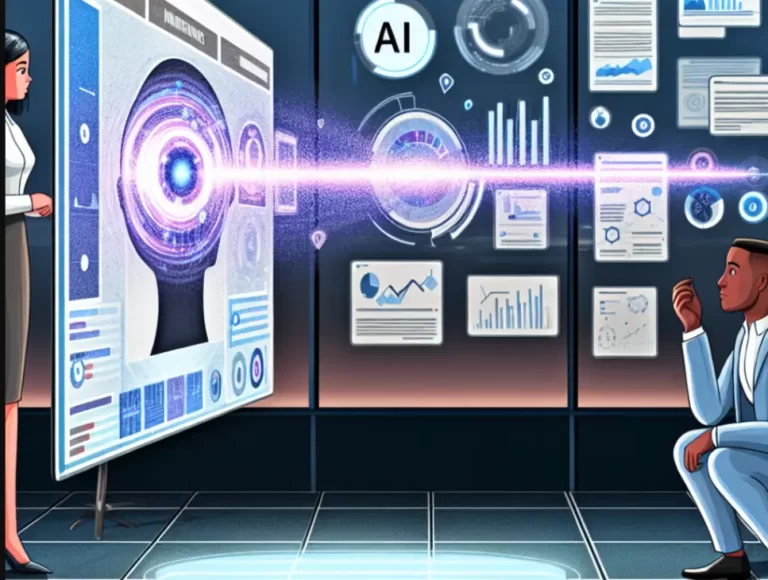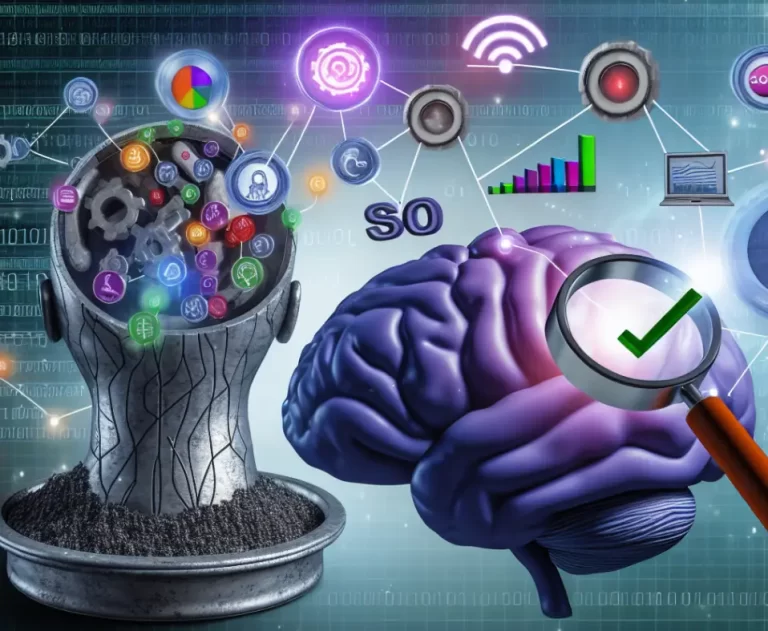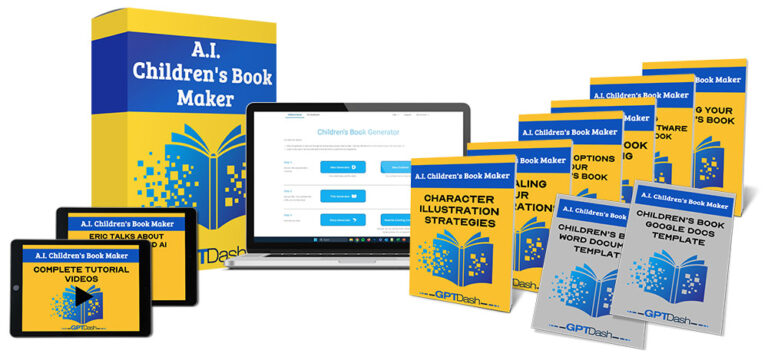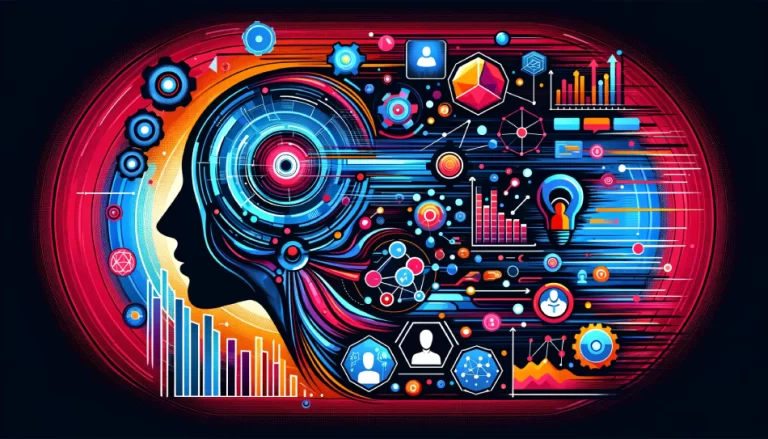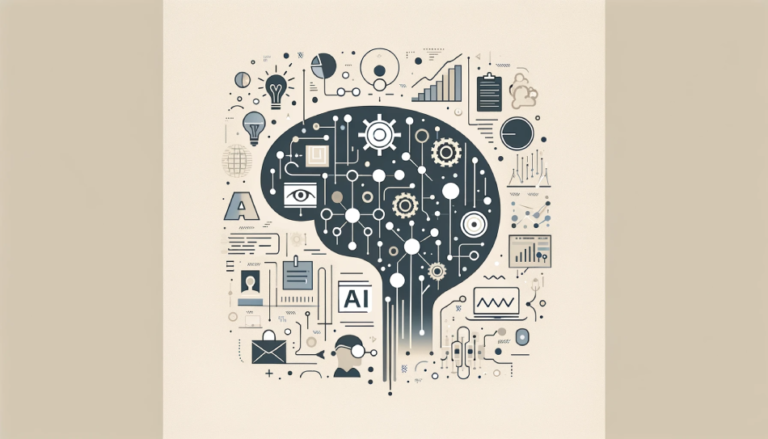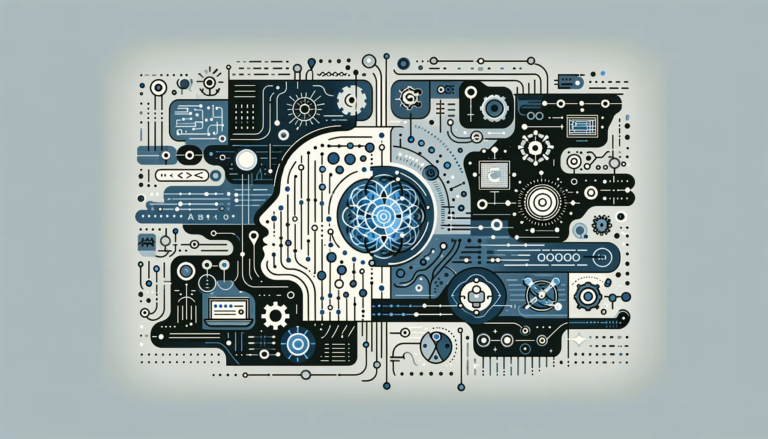AI for Effective Content Marketing
Welcome to the fascinating world of content marketing, where creativity meets technology! If you’ve been hearing a lot about Artificial Intelligence (AI) lately, you’re not alone. AI is transforming industries across the board, and content marketing is no exception. Let’s dive into how AI is reshaping the way we create, distribute, and optimize content.
Why AI Matters in Content Marketing
Content marketing has always been about delivering the right message to the right audience at the right time. However, as the digital landscape becomes more complex, achieving this goal manually is increasingly challenging. This is where AI steps in. By leveraging AI, marketers can enhance their strategies, streamline processes, and ultimately achieve better results.
The Evolution of Content Marketing
In the early days, content marketing was simple: write a blog post, share it on social media, and hope it resonates with your audience. Today, however, the landscape is much more intricate. With multiple channels, diverse audiences, and a constant influx of data, content marketing requires a more sophisticated approach.
AI offers a solution by automating various tasks, providing deeper insights, and enabling more personalized interactions. This technology helps marketers not just keep up with the ever-changing trends but stay ahead of the curve.
What AI Brings to the Table
So, what specific advantages does AI bring to content marketing? Here are a few key points:
- Efficiency: AI can automate repetitive tasks, such as content scheduling and distribution, freeing up valuable time for marketers to focus on strategy and creativity.
- Precision: By analyzing vast amounts of data, AI can identify patterns and trends that humans might miss, leading to more informed decision-making.
- Personalization: With AI, marketers can deliver customized content to individual users based on their preferences and behavior, enhancing engagement and loyalty.
- Scalability: AI allows marketers to scale their efforts effortlessly, reaching larger audiences without compromising on quality or relevance.
AI Tools in Content Marketing
There are numerous AI tools available today that cater to different aspects of content marketing. From AI-powered content creation platforms like Articoolo and Quill to audience analysis tools like Crimson Hexagon and BuzzSumo, the options are vast and varied. These tools help marketers create compelling content, understand their audience better, and optimize their campaigns for maximum impact.
Getting Started with AI in Content Marketing
If you’re new to AI, the idea of integrating it into your content marketing strategy might seem daunting. Here are a few steps to help you get started:
- Identify Your Goals: Understand what you want to achieve with AI, whether it’s improving content quality, increasing engagement, or optimizing distribution.
- Choose the Right Tools: Research and select AI tools that align with your goals and budget. Many platforms offer free trials, so you can test them out before making a commitment.
- Start Small: Begin with a pilot project to see how AI integrates with your current workflows and measure the results.
- Analyze and Adjust: Use the data generated by AI tools to refine your strategies and continuously improve your content marketing efforts.
Final Thoughts
AI is not just a buzzword; it’s a powerful ally in the world of content marketing. By embracing AI, marketers can unlock new levels of efficiency, precision, and personalization, ultimately driving better results and providing more value to their audience. So, why not take the plunge and explore the vast potential of AI in your content marketing strategy?

Understanding the Role of AI in Content Creation
Artificial Intelligence (AI) is revolutionizing content marketing, providing new tools and capabilities that seemed like science fiction just a few years ago. But what exactly is the role of AI in content creation? Let’s dive into how AI is reshaping the way we craft content, making the process more efficient, targeted, and engaging.
Content Ideation and Research
One of the first steps in content creation is coming up with compelling ideas and conducting research. AI tools like BuzzSumo and AnswerThePublic can analyze vast amounts of data to identify trending topics and popular queries. This helps content creators to tap into what the audience is already interested in, ensuring that the content resonates well with the target demographic.
Automated Content Writing
Believe it or not, AI can also assist in the actual writing process. Tools like GPT-3 by OpenAI can generate high-quality text, making it easier to draft articles, blog posts, and even full-length reports. While these tools are not yet perfect, they can significantly reduce the time it takes to move from a blank page to a first draft. This allows writers to focus on refining and adding a human touch to the content.
Enhancing Creativity
AI isn’t just a research and automation tool; it can also enhance creativity. Platforms like Articoolo and Quill can generate unique spins on topics, suggest headlines, and even facilitate A/B testing for different versions of content. This allows content creators to experiment with various approaches and discover what resonates best with their audience.
SEO Optimization
Search Engine Optimization (SEO) is crucial for content visibility, and AI tools like SurferSEO and ClearScope can optimize content for search engines more accurately than ever. These tools analyze top-performing pages and suggest keywords, headers, and meta descriptions, ensuring that your content is not only engaging but also easily discoverable by your audience.
Content Customization
AI allows for a level of customization that was previously unattainable. Tools like OneSpot and Persado can tailor content to different audience segments based on their behavior, preferences, and past interactions. This means your content can speak directly to different groups within your target audience, making it more relevant and engaging.
The Human-AI Collaboration
While AI is incredibly powerful, it’s important to remember that it’s a tool to assist human creativity, not replace it. The best content comes from a synergy between human intuition and AI’s analytical prowess. By leveraging AI for data-driven insights and efficiency, content creators can focus more on crafting messages that build genuine connections with their audience.
In conclusion, AI is not just a buzzword in the realm of content marketing. It’s a game-changer that is helping content creators become more efficient, creative, and effective. As we continue to explore and embrace these technologies, the future of content creation looks brighter than ever.
“`
Leveraging AI for Audience Analysis and Segmentation
Let’s talk about how artificial intelligence (AI) is revolutionizing audience analysis and segmentation in content marketing. It’s an exciting time for marketers, as AI is making it easier than ever to understand and reach the right audience with the right message.
Why is Audience Analysis Important?
Understanding who your audience is and what they want is crucial to any successful marketing strategy. Without this insight, you’re essentially shooting in the dark, hoping your content will resonate with someone, somewhere. This isn’t just inefficient; it can also be costly.
Audience analysis helps you:
- Identify the needs and preferences of your target audience.
- Create more relevant and engaging content.
- Allocate your marketing resources more effectively.
The Role of AI in Audience Analysis
AI takes audience analysis to a whole new level by processing vast amounts of data quickly and accurately. Traditional methods can be time-consuming and often lack the depth of insights that AI provides. Here’s how AI steps up the game:
- Data Collection: AI can gather data from various sources, including social media, website interactions, and customer feedback. This comprehensive data collection offers a 360-degree view of your audience.
- Pattern Recognition: AI algorithms excel at recognizing patterns in data that humans might miss. For instance, AI can identify which types of content are most engaging for different audience segments.
- Predictive Analytics: AI doesn’t just analyze past behavior; it can also predict future actions. This allows marketers to anticipate audience needs and preferences, making content planning more proactive.
Segmenting Your Audience with AI
Audience segmentation involves dividing your audience into smaller, more manageable groups based on specific criteria. This helps you tailor your content to meet the unique needs of each segment. AI can substantially enhance this process:
- Behavioral Segmentation: AI can analyze user behavior to identify segments based on their actions, such as frequent buyers, casual browsers, or first-time visitors. This helps in creating targeted content for each group.
- Demographic Segmentation: AI can sort your audience by age, gender, location, and other demographic factors, enabling more personalized marketing efforts.
- Psychographic Segmentation: AI goes beyond surface-level characteristics to understand the attitudes, interests, and values of your audience. This deeper insight allows for highly personalized content that truly resonates.
Practical Tips for Using AI in Audience Analysis
Ready to get started with AI-powered audience analysis? Here are some practical tips to help you make the most of this technology:
- Choose the Right Tools: There are numerous AI tools available for audience analysis, such as Google Analytics, HubSpot, and IBM Watson. Research and select the ones that best fit your needs.
- Integrate with Existing Systems: Ensure that your AI tools can integrate seamlessly with your existing marketing systems for streamlined data flow and analysis.
- Regularly Update Data: Keep your data fresh and up-to-date to ensure your AI algorithms have the latest information for accurate analysis.
- Monitor and Adjust: Continuously monitor the performance of your AI-driven strategies and be ready to make adjustments as needed. AI is powerful, but it’s not infallible.
Leveraging AI for audience analysis and segmentation can significantly enhance your content marketing efforts. By understanding your audience more deeply and delivering tailored content, you can boost engagement, improve customer satisfaction, and ultimately, drive better results.
“`html
Optimizing Content Distribution with AI Tools
Hey there, fellow content enthusiast! 🌟 If you’re like me, you probably find the world of content marketing thrilling yet somewhat challenging, especially when it comes to ensuring your brilliant content reaches the right audience. But don’t fret! AI tools are here to save the day and make content distribution a breeze.
Why AI Matters in Content Distribution
First off, let’s talk about why AI is such a game-changer in content distribution. Imagine having a personal assistant who works around the clock, analyzing data, identifying trends, and suggesting the best strategies to get your content in front of the right eyeballs. Sounds dreamy, right? That’s exactly what AI tools do – they take the guesswork out of the equation and optimize your distribution efforts with precision and efficiency.
AI-Powered Scheduling: Post at the Perfect Time
One of the coolest features of AI tools is their ability to determine the optimal times to post content. Instead of relying on generic best practices, AI analyzes your specific audience’s behavior. It looks at when they’re most active online, what days get the highest engagement, and even the type of content they prefer at different times of the day.
For instance, tools like Buffer and Hootsuite use AI to recommend posting schedules that maximize reach and engagement. This means no more trial and error – you can be more strategic and efficient with your posting times.
Smart Content Distribution Channels
Choosing the right distribution channels is crucial, and AI can help with that too! AI tools analyze data from various platforms to determine where your audience is most active and which channels yield the highest ROI. Whether it’s social media, email marketing, or content syndication platforms, AI ensures you’re focusing your efforts where they matter most.
For example, HubSpot uses AI to track performance across different channels, providing insights into which ones are driving the most traffic and conversions. This allows you to allocate resources more effectively and fine-tune your distribution strategy.
Content Repurposing: Maximize Your Reach
Ever heard of the phrase “work smarter, not harder”? AI tools take this to heart by helping you repurpose content for different formats and platforms. Whether it’s turning a blog post into a video, an infographic, or social media snippets, AI tools streamline the repurposing process, ensuring your content reaches a wider audience without extra effort on your part.
Tools like Lumen5 use AI to transform written content into engaging videos, while Canva offers AI-driven templates to create eye-catching visuals. This means you can extend the lifespan of your content and get more mileage out of each piece.
Real-Time Analytics and Adjustments
The beauty of AI in content distribution lies in its ability to provide real-time analytics and suggest adjustments on the fly. This means you can see how your content is performing in real-time and make data-driven decisions to optimize your strategy instantly.
Platforms like Google Analytics and Sprout Social offer AI-powered insights that highlight what’s working and what’s not, allowing you to pivot your approach as needed. This continuous feedback loop ensures your content distribution strategy is always at its best.
Wrapping Up
So, there you have it – AI tools are not just a trendy buzzword; they are powerful allies in your content distribution journey. By leveraging AI, you can post content at the perfect times, choose the best channels, repurpose efficiently, and make real-time adjustments to boost your reach and engagement.
Ready to give AI tools a try? Trust me, once you do, you’ll wonder how you ever managed without them. Happy distributing! 🎉
“`
“`html
Enhancing User Engagement through AI-Powered Personalization
Personalization has become the holy grail of modern content marketing. Remember the days when you’d receive generic, one-size-fits-all emails or stumble upon websites that felt like they were talking to no one in particular? Those days are fast fading into obscurity, thanks to the power of Artificial Intelligence (AI). Let’s delve into how AI is making content feel more personal and engaging for users, like a tailor stitching a bespoke suit.
Understanding AI-Powered Personalization
At its core, AI-powered personalization is about delivering bespoke content to users based on their preferences, behavior, and interactions. Think of it as having a personal assistant who knows exactly what you like, when you like it, and how you like it served. AI algorithms analyze vast amounts of data to create hyper-relevant content experiences that resonate with individual users. This isn’t just about calling someone by their first name in an email; it’s about crafting meaningful interactions that lead to deeper engagement.
Why Personalization Matters
Engagement is the currency of the digital age. The more engaged your audience is, the more likely they are to convert, whether that means making a purchase, signing up for a newsletter, or sharing your content with their network. Personalized content makes users feel valued and understood, fostering a sense of loyalty and trust. Consider these key benefits:
- Increased Retention: Users are more likely to return to a website or platform that consistently delivers relevant content.
- Higher Conversion Rates: Personalized recommendations and tailored content can significantly boost conversion rates.
- Enhanced User Experience: A seamless, personalized experience can make navigating your site or app more enjoyable and efficient for users.
How AI Achieves This
So, how does AI pull off this wizardry? It all hinges on data—lots of it. AI systems use machine learning algorithms to analyze user behavior, preferences, and past interactions. This analysis can include:
- Browsing History: AI looks at what pages users visit, how long they stay, and what they click on to gauge interests.
- Purchase History: For e-commerce platforms, knowing what a user has bought before can help predict future purchases and recommend similar products.
- Interaction Data: Comments, likes, shares, and other forms of interaction provide valuable insights into user preferences.
Once this data is compiled, AI can segment users into different personas and tailor content to each group. It can suggest articles, products, or services that are most relevant to a user, making the experience feel unique and customized.
Practical Applications of AI-Powered Personalization
Let’s bring this to life with some practical examples:
- Netflix: Ever notice how Netflix seems to know exactly what you’ll want to watch next? Their recommendation engine uses AI to analyze your viewing habits and suggest shows or movies aligned with your tastes.
- Spotify: Spotify’s Discover Weekly playlist is another brilliant example. It curates a list of songs you might like based on your listening history, making music discovery feel personal and exciting.
- Amazon: Amazon’s product recommendations are powered by AI, suggesting items you might be interested in based on your past purchases and browsing history.
The Future of Personalization
AI-powered personalization is not just a trend; it’s the future of content marketing. As AI technology continues to evolve, the capabilities for personalizing content will only become more sophisticated and accurate. Companies that leverage these advancements will not just keep pace with the competition but will set the standard for user engagement and satisfaction.
So, whether you’re a marketer, a business owner, or just someone curious about the future of digital content, keep an eye on AI-powered personalization. It’s not just changing the game—it’s rewriting the rulebook.
“`
Utilizing AI for Predictive Analytics in Content Strategy
Imagine having a crystal ball that could tell you exactly what kind of content your audience craves, and when they are most likely to consume it. Sounds like a marketer’s dream, right? Enter **predictive analytics** with a little help from our tech-savvy friend, AI. This isn’t just another fancy buzzword; it’s a game-changer, especially in the realm of content strategy.
Understanding Predictive Analytics
Predictive analytics involves using historical data, machine learning, and statistical algorithms to predict future outcomes. In content marketing, this means leveraging data to forecast which topics will resonate, what types of content will perform best, and how to time your posts for maximum engagement.
How AI Enhances Predictive Analytics
AI takes predictive analytics to a whole new level. Traditional analytics might help you understand past performance, but AI digs deeper, identifying patterns and trends that aren’t immediately obvious. By processing vast amounts of data in real-time, AI can offer insights with an accuracy that’s hard to match manually.
Key Benefits of AI-Powered Predictive Analytics
Why should you care about incorporating AI-driven predictive analytics into your content strategy? Here are a few compelling reasons:
- Improved Content Relevance: By analyzing user behavior and engagement metrics, AI can predict what topics will resonate. This helps in crafting highly relevant content that your audience actually wants to read.
- Enhanced Timing: Knowing when your audience is most active allows you to schedule content for peak engagement. AI algorithms can predict the optimal posting times based on historical data and real-time trends.
- Resource Optimization: Creating content is resource-intensive. Predictive analytics helps in allocating your resources more efficiently by focusing efforts on high-impact topics.
Implementing AI-Driven Predictive Analytics
So, you’re sold on the benefits. But how do you actually implement AI-driven predictive analytics?
- Choose the Right Tools: There are numerous tools available, from Google Analytics with machine learning integrations to specialized platforms like HubSpot and Marketo. Evaluate which fits best with your current tech stack.
- Data Collection: The more data you have, the better. Gather data from various sources, including social media, website analytics, email campaigns, and customer feedback.
- Analyze and Interpret: Use AI to process and analyze the data. This might involve setting up machine learning models that can identify trends and make predictions.
- Actionable Insights: Translate these insights into actionable steps. If the data suggests that blog posts on a specific topic perform well, plan your content calendar accordingly.
Challenges and Considerations
While the advantages are clear, it’s essential to be aware of potential challenges:
- Data Quality: AI is only as good as the data it processes. Ensure your data is clean, relevant, and up-to-date.
- Complexity: Implementing AI can be complex and may require specialized skills. Consider partnering with experts if needed.
- Privacy Concerns: Be mindful of data privacy laws and regulations. Ensure that your data collection and usage comply with legal standards.
Final Thoughts
AI-powered predictive analytics is not just a futuristic concept; it’s a practical tool that can significantly enhance your content strategy. By leveraging these insights, you can create more relevant content, engage your audience better, and ultimately drive more success in your marketing efforts. So, why not let AI be your new crystal ball?
Case Studies: Successful AI-Driven Content Marketing Campaigns
Picture this: You’re navigating the complex realm of content marketing, trying to keep up with trends, audience preferences, and the ever-changing algorithms of social media platforms. Sounds overwhelming, right? Enter AI—the game-changer. Today, let’s dive into some fascinating case studies showcasing how AI has revolutionized content marketing campaigns, providing companies with remarkable results.
1. Netflix: The Master of Personalization
Netflix has set the gold standard when it comes to leveraging AI for content recommendation. Remember the last time you saw a “Because you watched…” suggestion that seemed spot on? That’s AI at work.
**How They Did It:**
– **Data Collection:** Netflix collects data on viewing habits, from the shows you binge-watch to the exact time you hit pause.
– **Machine Learning Algorithms:** These algorithms analyze the data to predict what you might like next, tailored specifically to your viewing history.
– **Personalized Thumbnails:** Even the thumbnails you see are curated for you, based on your preferences and previous interactions.
**Result:** This hyper-personalized experience keeps users engaged, leading to longer subscription durations and increased customer satisfaction.
2. The New York Times: Optimizing Content Distribution
The New York Times is a colossal name in journalism, but even giants need to adapt to stay relevant. They’ve harnessed AI to optimize how and when their content gets distributed.
**How They Did It:**
– **Smart Distribution:** Using AI tools to determine the best times to publish articles for maximum engagement.
– **Content Performance Analytics:** AI analyzes which types of articles perform well at different times and on various platforms.
– **Automated Summaries:** AI generates concise summaries to help readers get the essence of articles quickly, enhancing user experience.
**Result:** The New York Times has seen boosts in reader engagement, as well as higher click-through rates on their articles, thanks to more strategic content distribution.
3. Sephora: Enhancing Customer Interaction
Sephora, the beauty retailer, uses AI to create a seamless and personalized shopping experience, both online and offline.
**How They Did It:**
– **Virtual Artist:** An AI-powered tool lets customers try on makeup virtually, providing a personalized shopping experience.
– **Chatbots:** AI chatbots handle customer queries, recommend products, and even offer beauty tips.
– **Recommendation Engine:** Based on previous purchases and browsing history, AI suggests products that align with individual preferences.
**Result:** Sephora’s AI initiatives have led to improved customer satisfaction and increased sales, as customers find products that precisely meet their needs.
4. Coca-Cola: Crafting Compelling Content
Even a brand as established as Coca-Cola constantly explores new ways to connect with its audience. AI has played a pivotal role in its content creation strategy.
**How They Did It:**
– **Content Generation:** Utilizing AI to analyze popular themes, trends, and consumer sentiment, Coca-Cola crafts content that resonates with their audience.
– **Predictive Analytics:** AI predicts which content types will be most effective based on historical data and current trends.
– **Social Media Listening:** AI tools monitor social media for brand mentions, enabling Coca-Cola to engage with customers in real-time.
**Result:** Coca-Cola’s AI-driven content strategy has led to higher engagement rates and a stronger connection with their target audience.
Takeaway: The Future is AI-Driven
These case studies underscore the transformative power of AI in content marketing. By analyzing data, personalizing experiences, and optimizing strategies, AI enables brands to elevate their marketing campaigns to unprecedented levels. Whether you’re a startup or a well-established company, integrating AI into your content strategy can yield remarkable benefits. So, why not take a page from these success stories and start your AI journey today?




